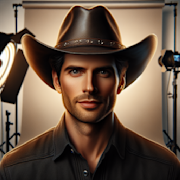The Birth and Influence of Classic Cinema on Modern Filmmaking

In the early years of the 20th century, a new medium of art and entertainment was born - cinema. From its humble beginnings in silent black and white films, the art of filmmaking has evolved immensely over the years. Many of the techniques and storytelling methods used in classical cinema continue to shape and influence modern filmmakers. In this blog post, we will explore the birth of classic cinema and delve into its lasting impact on the world of filmmaking today.
1. The Birth of Classic Cinema
1.1 The Lumière Brothers and the First Cinematic Experiences
The birth of cinema can be attributed to the Lumière Brothers, Auguste and Louis. In 1895, they presented the first public screening of their films in Paris, France. These short films captured everyday scenes, such as workers leaving a factory or a train arriving at a station. Audiences were enthralled by the moving images, and this marked the beginning of the cinematic revolution.
1.2 The Silent Era and the Pioneers of Classic Cinema
During the silent era, films relied solely on visuals to tell stories, as there was no synchronized sound. This led to an emphasis on visual storytelling techniques, such as the innovative use of camera angles, lighting, and editing. Filmmakers like D.W. Griffith and Sergei Eisenstein pushed the boundaries of visual storytelling, paving the way for the future of classical cinema.
2. The Influence of Classic Cinema
2.1 The Art of Narrative Storytelling
One of the most significant contributions of classic cinema to modern filmmaking is the art of narrative storytelling. Classical films were often structured around strong narratives with well-defined characters and clear story arcs. This emphasis on storytelling techniques has greatly influenced modern filmmakers, who continue to rely on compelling narratives to engage audiences.
2.2 Innovation in Cinematic Techniques
Classic cinema introduced several groundbreaking techniques that have become standard in modern filmmaking. The establishment of the three-act structure, the use of close-ups and tracking shots, and the development of montage editing all originated from the classical era. These techniques continue to be widely used by contemporary directors and cinematographers to enhance the visual impact of their films.
2.3 Iconic Film Movements and Genres
Classic cinema is also responsible for popularizing iconic film movements and genres that still resonate with audiences today. The German Expressionism movement, with its dramatic lighting and exaggerated set designs, influenced the aesthetics of film noir and has left an indelible mark on the world of cinematography. The advent of the Western genre, with its tales of cowboys and outlaws, shaped the foundations of modern action and adventure films.
3. The Enduring Legacy of Classic Cinema
3.1 Preservation and Restoration Efforts
Despite the rise of modern technology, efforts to preserve and restore classic films continue to be a priority within the film industry. Many iconic films from the classical era have been carefully restored to ensure their longevity and availability for future generations. This commitment to preserving classic cinema demonstrates its enduring significance and contribution to the art form.
3.2 Homage and Tribute in Modern Films
Classic cinema remains a rich source of inspiration for contemporary filmmakers. Many directors pay homage to their cinematic predecessors by incorporating visual references, themes, and storytelling techniques from classical films into their work. This serves as a testament to the lasting influence and timeless appeal of classic cinema.
4. The Future of Classic Cinema
4.1 Rediscovering Classic Films
As technology advances and access to film archives becomes more widespread, there is a growing interest in discovering and appreciating classic cinema. Film festivals, specialized streaming platforms, and retrospective screenings provide opportunities for audiences to experience the magic of classical films. By rediscovering these timeless masterpieces, we can gain a deeper understanding of the art of filmmaking and its evolution.
4.2 Incorporating Classic Techniques in Modern Filmmaking
While modern filmmaking continues to evolve, classic techniques and storytelling methods remain relevant. Contemporary directors are finding innovative ways to incorporate these techniques into their work, bridging the gap between old and new. By marrying the best of classical and modern cinema, filmmakers can create compelling and visually stunning films that resonate with audiences across generations.
In conclusion, the birth of classic cinema marked a significant turning point in the history of filmmaking. It introduced groundbreaking techniques, established narrative storytelling as an essential element, and popularized iconic film movements and genres. The enduring legacy of classic cinema can still be seen in the preservation efforts, homage in modern films, and the continued influence of classical techniques on contemporary filmmaking. By embracing classic cinema, we can truly appreciate the art form and understand its profound impact on the world of filmmaking today.

Alberto Miller
Movie Fanatic
More From Classics Authority Movies

Movie
12 Years a Slave (2013)

Movie
The Sting (1973)

Movie
Citizen Kane (1941)

Movie
Manhattan (1979)

Movie
Andrei Rublev (1966)

Movie
Classic Movies for a Rainy Day: Cozy Up with Cinemas Finest





